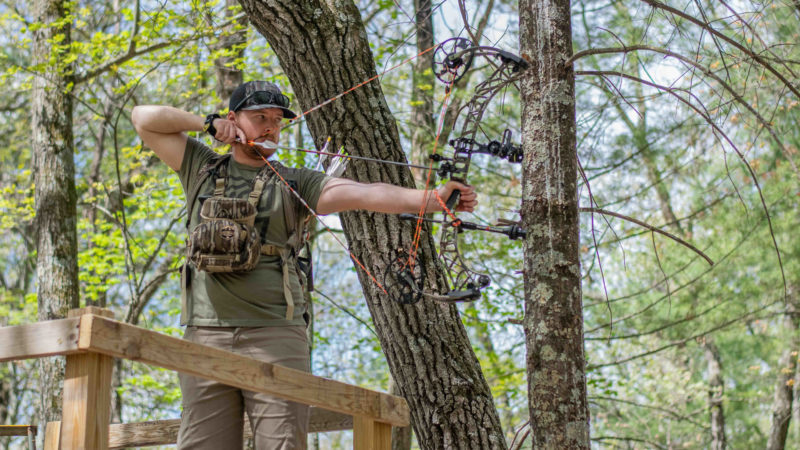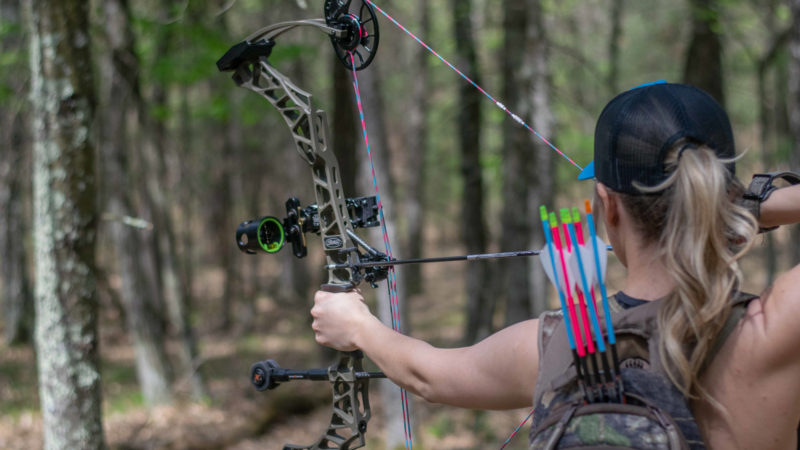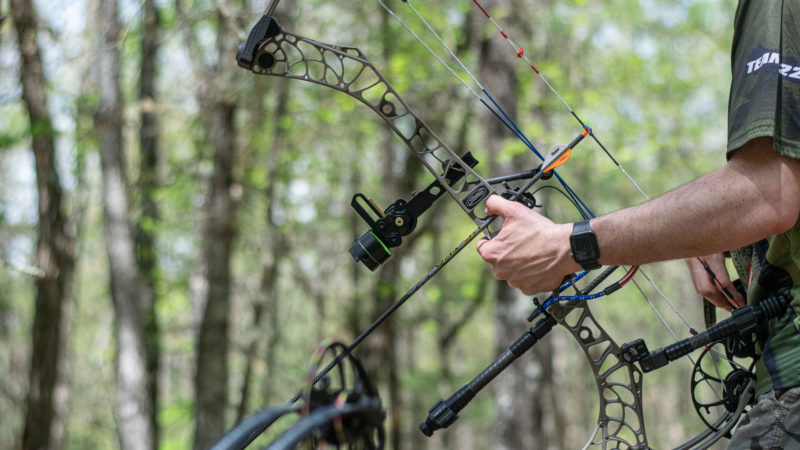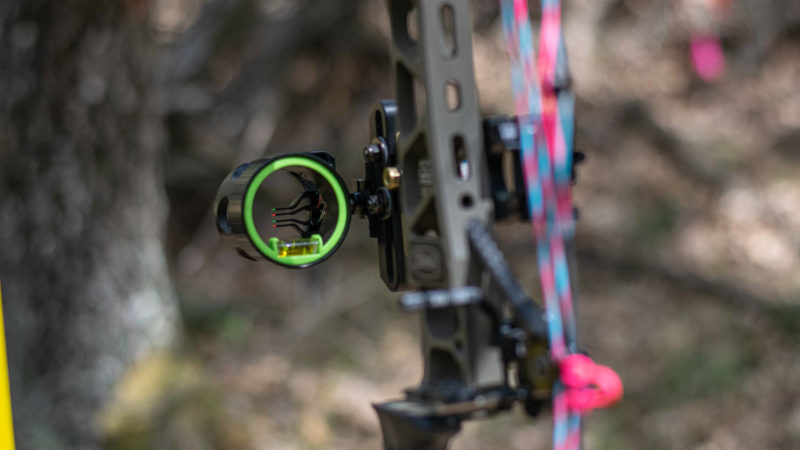Bowhunting has always offered little room for error. Maybe that’s one of the reasons I love it so much. Essentially everything has to be perfect, or who knows where your arrow will end up hitting. I would lean towards saying that all great bowhunters have some form of obsession that drives them to nail down a perfect form.
Every once in a while, some of my friends will message me asking why they’re such hot and cold shooters. One day their groups are tight, the next day you could drive a car through them. It’s a valid question. Why would your shooting be so sporadic?

Inconsistent shooting can send archers into a fit of rage, resulting in them adjusting their sights every other day, believing that their bow is the issue, or maybe even giving up the sport altogether. At the risk of generalizing, let me just say that 9 times out of 10, it isn’t the sight and it isn’t your bow. It’s your form. And before you sell your bow on ebay and vow to only use a rifle, let me just tell you that it is without a doubt fixable.
When I help people work on their shooting consistency, there are usually a few major things that I look for that they could be doing wrong. Some people are doing several things wrong, others just have one minor hiccup in their form that is still enough to take an arrow from a lethal shot, to a clean miss, or even worse, a non-fatal wound.
Here are a few of the things I look for when people are shooting inconsistently, and how to fix them.
Bow Grip
Having an improper bow grip seems to be one of the number one reasons people are shooting inconsistently. We have a tendency to want to grip the bow tight, and that would seem logical in order to have a steady aim. But in reality, it produces the opposite result.
Gripping a bow too tight will cause you to torque the bow, basically jerking it at an angle upon shooting, resulting in inconsistent arrow flight. I used to draw a diagram on my friends hand to show them exactly where the bow should sit. It should cradle between your thumb and index finger, not putting pressure on the grip, but rather pushing towards the target, with the rest of your arm relaxed.

Trigger Punching
A common archery mistake, especially with new archers is punching their release trigger when shooting. This creates an almost unnoticeable jerk that will result in poor accuracy. Instead, you need to learn how to make a surprise release.
A couple of methods that have helped me in the past to develop a surprise release is increasing the sensitivity of my release (most have this function) and shortening the length of the actual trigger itself. Both of these changes will take a little bit of getting used to, but once you do, you’ll notice a massive difference.
A good way to work on your surprise release is what most people would call blind bale shooting. Essentially you take a large sized target (or a hay bale, where the exercise gets its name), set it up about 8-10 feet away, find your anchor points, close your eyes and only focus on your release trigger. This will help you get a feel for what it should feel like, without having to worry about where you are hitting on the target.
Consistent Anchor Points
Having consistent anchor points is crucial to being a good archer. Without this your shots will never be consistent. In fact, when I am helping out new archers, I tell them to not even worry about where their arrows are hitting, and focus only on developing consistent anchor points.
Although I don’t currently use a kisser button, they can be an amazing tool for new archers that are trying to get their anchor points nailed down. They may seem like an annoyance at first, but they essentially force you to put your bow string in the same spot every time, which will increase consistency.

Follow Through
This may not affect you during practice sessions, but it is extremely common in a real life hunting situation, as your trophy buck is standing broadside twenty yards in front of you, your adrenaline is at an all time high, and upon release you immediately want to see where your shot hit, so you drop your bow too quickly.
This sudden drop of the bow will have a huge impact on arrow flight and will likely result in a missed shot. When I am helping new bowhunters, I tell them not to even look where their arrow hit, and I will tell them instead. The point of this exercise is that you keep your bow in a stable position, for at least a couple of seconds, ensuring there is no impact from dropping the bow too soon.
Next time you are practicing, bring a buddy and have him call out your hits so that you can focus on keeping your bow in a steady position. Or, if you are by yourself, make it a point that you don’t drop your bow after the shot until after you count to two mississippi. This helped me tremendously when I first got into bowhunting, and it will help you too.
Floating Your Pin
A lot of archers want to either raise up their pin to their target, or lower down their pin to the target, and release as soon as it lines up. I’m not saying this mindset doesn’t make sense. Afterall, the end result is technically the same, they release when their pin is on the bullseye. But this isn’t what actually happens.
What ends up happening is that in the time it takes your brain to realize your pin is on the target and send a signal to your finger to pull the trigger, your pin is already off. This happens in a microsecond. So quickly that you probably don’t even realize it’s an issue. But it is.
Instead, what you should be doing is practicing to float your pin all around the bullseye. A common practice for this is to draw back and aim, without ever firing. This teaches you that it’s okay not to pull the trigger, even when your pin is on the bullseye.
The fact is, it doesn’t matter whether you’re a new archer, or a world champion. No one can keep their pin exactly on the center of the bullseye at all times. Your pin is going to naturally float around it, but the important thing is that you always come back to the center. After constant practice, your floating radius will become smaller and smaller, and you’ll be ready to start releasing.

Finally, Don’t Mess With Your Sight
I touched on this briefly earlier in the article, but it’s so important that I want to bring it up again. New archers have a tendency to blame their inconsistencies on the bow sight, leading them to adjusting and readjusting constantly. All this is going to do is put unnecessary wear on your bow sight, and leave you even more confused and frustrated.
Instead of being upset about where your arrows are hitting, focus on the basics of getting your form perfect. Hitting the bullseye on your target isn’t nearly as important as developing solid groups, and that only comes with good form. Once your groups are tight, then you can focus on adjusting your sight if they’re hitting off target.
Final Thoughts
Becoming a consistent archer takes time. After years of bowhunting, I am still in my backyard or at the range every day working on my form. As we approach this upcoming deer season, take this time beforehand to brush up on your form, and break any bad habits. As soon as you develop consistent habits with your form, you will then start to see tighter groups inside the bullseye.

 By
By 



